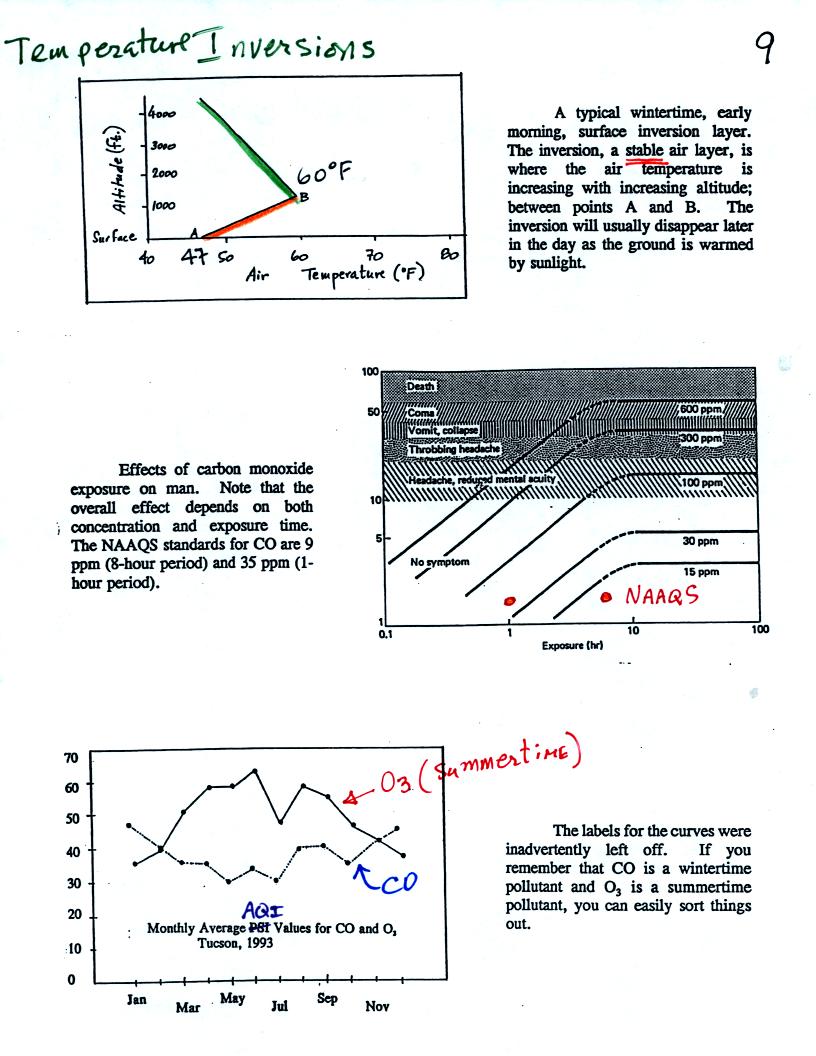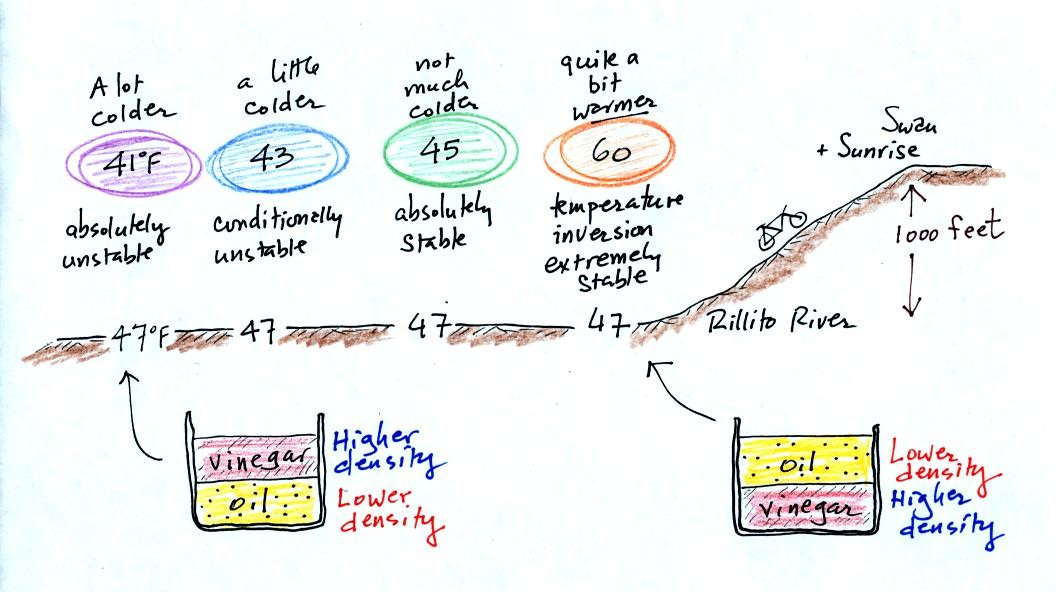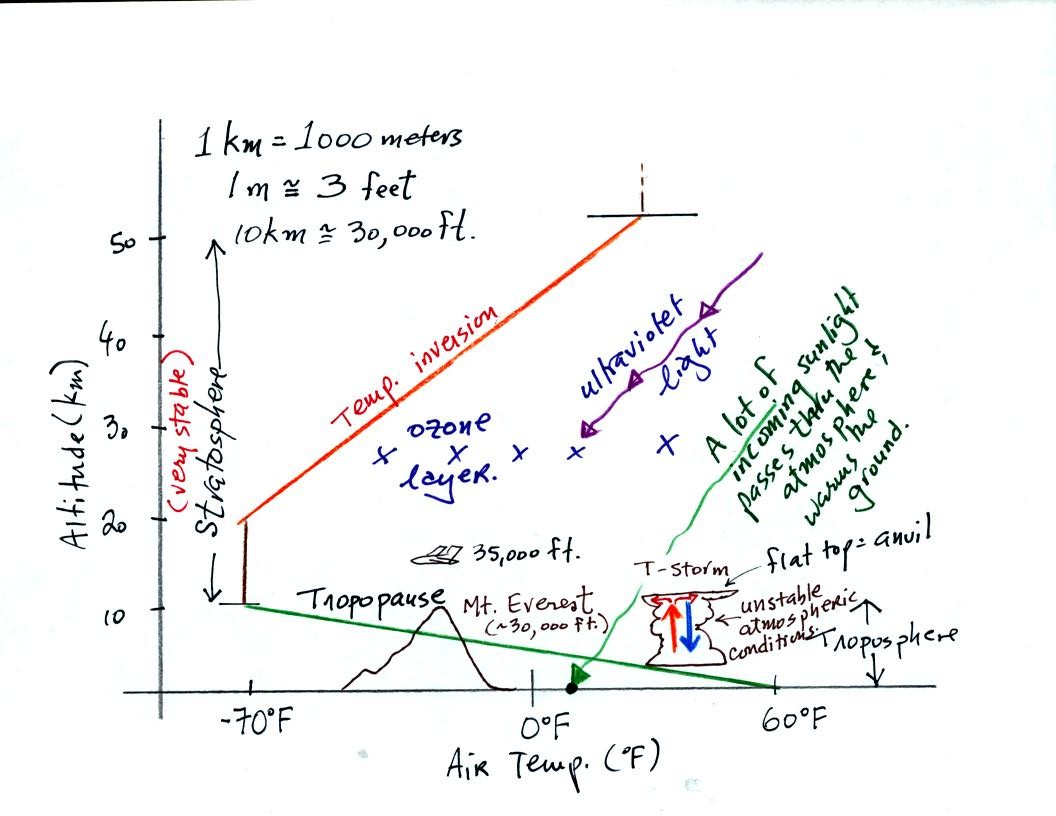Monday Jan. 23, 2006
The 1S1P reports are due next Monday, Jan. 30.
The first Quiz (practice) is Wednesday, Feb. 1. Look for the
Practice Quiz Study Guide sometime this week.
You should expect to see an Optional Homework Assignment sometime this
week.

Concentrations of several pollutants are measured daily in many
cities (particulate matter, ozone, and carbon monoxide are monitored in
Tucson) and measured values are reported in the newspaper or on
television using the Air Quality Index (formerly the pollutant
standards index). This is basically the measured value divided by
the allowed value multiplied by 100%. Current Air Quality Index values for
Tucson are available online.

This ends are coverage of air pollutants for this semester. You
can find more information about air pollutants at the Pima County Department of
Environmental Quality web page.

The rate at which air temperature decreases with increasing
altitude determines whether the atmosphere is stable or unstable.
4 different scenarios are shown above. When the air cools
as rapidly as it does in the left most example above (6o F/ 1000 ft.)
the atmosphere is absolutely unstable. This is somewhat analogous
to trying to put some vegetable oil on the bottom of a glass and then
pouring vinegar above it. The oil is less dense and will float on
the water in the vinegar. The oil and the vinegar in the glass
would quickly trade places. Thunderstorm formation requires
unstable atmospheric conditions.
The middle example shows conditional instability (we'll see what the
conditions are later in the semester).
A temperature inversion like shown at right in the figure above is a
fairly common occurrence on winter mornings in Tucson. This
produces extremely stable atmospheric conditions. Air next to the
ground will not freely mix with air overhead. Pollutants released
into the air layer at the ground will increase in concentration because
they cannot mix with and be diluted by cleaner air above.

The atmosphere can be split into layers
depending on whether
temperature is increasing or decreasing with increasing altitude.
The two lowest layers are shown in the figure above. We live in
the troposphere. The troposphere is found, on average, between 0
and about 10 km altitude, and is where temperature using decreases with
increasing altitude. Most of the sunlight arriving at the top of
the atmosphere passes through the atmosphere and is absorbed at the
ground. This warms the ground. The air in contact with the
ground is warmer than air higher up and further from the ground.
The troposphere contains most of the water vapor
in the atmosphere and is where most of the weather occurs. The
troposphere can be stable or unstable. The thunderstorm shown in
the figure indicates unstable conditions, meaning that strong up and
down air motions are possible. When the thunderstorm reaches the
top of the troposphere, it runs into the stable stratosphere. The
air can't continue to rise in the stable stratosphere so the cloud
flattens out and forms an anvil.
At nearly 30,000 feet altitude, the summit of Mt.
Everest is near the top of the troposphere. Commercial aircraft
fly at cruising altitudes between 30,000 and 40,000 feet. This is
right at the boundary between the top of the troposphere and the bottom
of the stratosphere.
The ozone layer is found in the stratosphere. Absorption of
ultraviolet light by ozone warms the air in the stratosphere and
explains why temperature increases with increasing altitude between 20
and 50 km altitude.

In the last 10 minutes of the class we watched a short segment from a
PBS program titled "The Adventurers." This episode covered the
first manned balloon flight into the stratosphere (August Piccard and
Paul Kipfer. This and other manned balloon flights are summarized
on pps 31 and 32 in the photocopied class notes.






